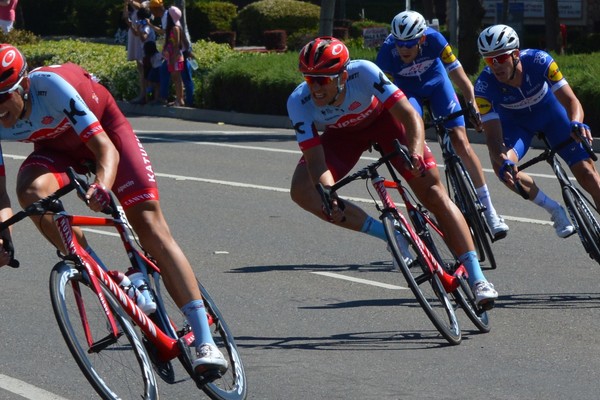
Drafting is a skill that’s learned over time and with practice, but the basics are simple - at first, stay about 2 feet from the rear wheel of the rider in front of you. Keep your head up and, rather than looking at the rider’s wheel or hub, look ahead of the rider and get a feel for where your bike is in relation to theirs. Stay relaxed. Keep your hands near the brakes. Try to avoid using the brakes to keep from running into the wheel in front. Rather, gently drift to the left (or the right if you’re in a country that drives on the left) out of the draft of the rider in front, and catch a bit of wind on your chest. When you’re as far behind the rider leading you as you want to be, gently drift back into line.
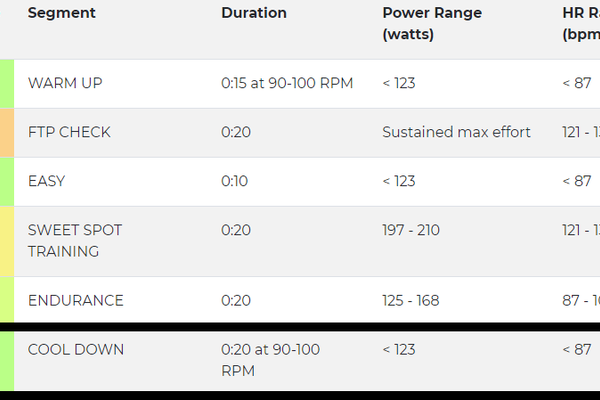
It is common knowledge that cooling down after a training ride or cycling event is a best practice. However, time crunched cycling athletes often skip the cool down. We get it. You have a busy schedule and are trying to fit training into a tsunami of work, family, social and life appointments. However, skipping the cool down is not a good idea. Why? What are the consequences if you don’t cool down?
The purpose of the cool down is to slowly bring your heart rate, respiration and body temperature back to normal and spin excess metabolic waste products out of your muscles. Cooling down helps you recover from training more quickly. It also helps you avoid dizziness and reduce the amount of blood pooling in your major muscle groups. The harder the workout, the more important it is to cool down.
Think of it like this; if your body is a car traveling at 50 miles per hour, what is more comfortable as you approach a stop sign? You can slam on the brakes with a few feet to go and skid to a jarring stop and experience whiplash, or you can gradually apply the brakes well in advance and come to a gentle stop, ready to hit the accelerator again.
We all have romantic images of the runner or rider giving it their all, crossing the finish line and then collapsing into a heap completely exhausted as a kind volunteer wraps them in a space blanket. The reality is quite different. Not cooling down properly after a hard workout can give you flu like symptoms including fever, chills and nausea! That’s why you see cyclists like Chris Froome riding a trainer after winning a Stage of the Tour De France as he waits for the podium ceremony.
What is the best way to cool down for cycling? According to coach Kadir, you should pedal at a high cadence of 80-90 RPM in a low gear that is very easy to spin. You should do this for 10-15 minutes. Older athletes generally need a little longer to cool down. This technique gently decreases your heart rate, respiration and temperature. Also, it has been shown that spinning is a low gear is the most efficient way to clear metabolic waste products from your muscles. All VeloPro dynamic and personalized workouts include a cool down interval.
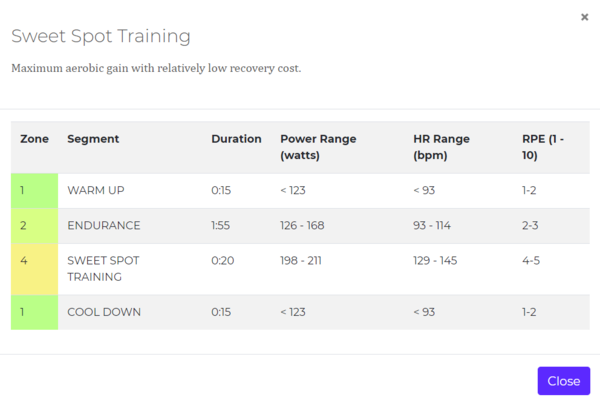
It is common knowledge that warming up before training or cycling in an event is a best practice. However, for a time crunched cycling athlete it is tempting to skip it and get right to pounding the pedals. This is not a good idea. Why? What are the consequences if you don’t warm up?
The why should be obvious. You need to elevate your body temperature and increase blood flow and oxygen to your muscles. This helps prepare you for more strenuous activity and has been shown to improve performance. If you do not warm up, you greatly increase your odds of injury. Also, if you start too quickly without warming up you can burn your available energy stores and be left without the reserves you need for longer endurance efforts. For example, sprinting or taking on a huge climb at the beginning of a ride without a proper warmup can decrease your performance and even send you on an early trip to bonktown!
What is the best way to warm up for cycling? According to coach Kadir, you should pedal at a high cadence of 80-90 RPM in a low gear that is very easy to spin. You should do this for 10-15 minutes. Older athletes generally need a little longer to warm up. This technique gently increases your heart rate, heats up your muscles, tendons and ligaments and primes your metabolism for efficient oxygen and energy processing. All VeloPro dynamic and personalized workouts include a warmup interval. If you are racing or riding in a competitive event, the chaos of traveling, registering and making it to the starting line can nix your warmup plans. Do not make this mistake. Therefore, you see the most experienced athletes arrive early and pedal on their fold up trainers.
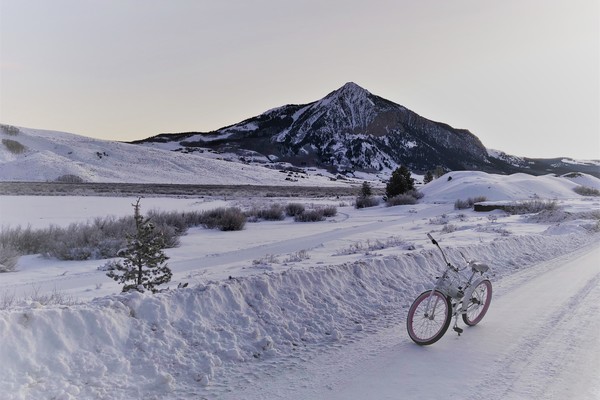
First, for safety, we first recommend that you ride an indoor trainer. If you don’t have a trainer, it is okay to do other indoor cardio activities like treadmill, elliptical, rowing machine or stair-climber.
However, we also know that riding in the snow can be peaceful and magical! If you are adventurous, confident in your bike-handling skills, and find a safe route without traffic, please consider the following snow cycling tips:
Big thanks to Dangerous Dave Anolik for his photo and snow cycling tips!
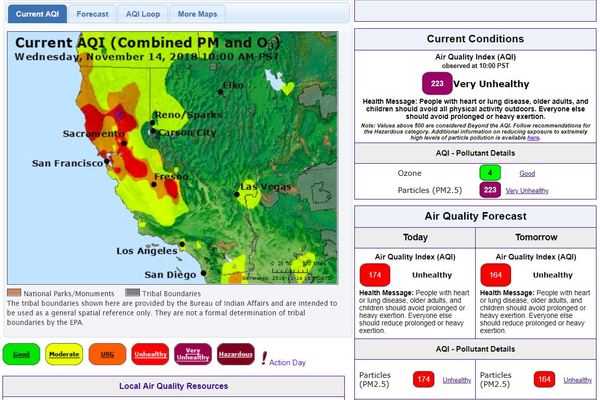
Virtually every day we see the effects of Climate Change. Millenia-old icebergs come apart, hurricanes and typhoons become more destructive, and forest fires more common. For athletes, the most readily felt effect of all this is on the quality of the air we breathe.
Exercising in dirty air is never a good idea. But what constitutes dirty air? The US Environmental Protection Agency uses a 0-300 scale called Air Quality Index (AQI). AQI considers measurements of ozone, large and small particulates, sulfur dioxide, and carbon monoxide, so it’s a good indicator of when and when not to train outdoors and, perhaps more importantly, how hard to train, or not. It’s important to note here that, for endurance athletes, the pollutants to really watch out for are small particle pollutants – those classified as PM2.5 – that easily enter the bloodstream through one’s lungs. PM2.5s are commonly produced by vehicles, industry, dust storms, and forest fires. The latter are increasingly common on the US west coast, once the standard bearer for clean air.
For healthy individuals, with no respiratory issues like asthma, sinusitis, or significant pollen allergies, hard exercise (defined as Level 3 or higher – that which, for most people, means breathing through the mouth as well as the nose, thereby bypassing the nasal passages’ natural filters) exercising with AQI levels above 150 is not recommended. In this case, it’s better to either do your workout indoors, or just do an easier one if you really must get outside. For levels above 150, the best option is to simply take the day off.
For our U.S. riders, you can find your local AQI at the Environmental Protection Agency’s AirNow Website. Look at the top of the page. You can select your area by zip code or state.
For our European riders, you can find your local European Environment Agency’s Air Quality Site. Look at the bottom of the page. You can select your country for more details.

Winter is coming! Here's a quick checklist to prepare your wolf...er...bike for winter riding.
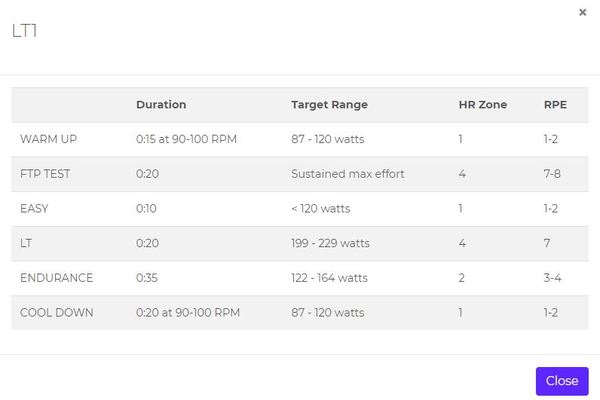
Functional Threshold Power, or FTP, is an objective scientific measure of cycling performance. FTP is simply the average maximum power, measured in watts, that you can maintain for a 60-minute period. This gives you a good idea of your cycling strength and fitness. FTP is a great way to see if your training is helping you to improve over time. You can also compare your FTP with riders of all levels.
At VeloPro, we use the 20-minute method to derive your FTP. This method helps encourage you to test regularly while avoiding injury. FTP is best checked every 2-3 weeks after a build period in your training workouts. The actual test is best administered as part of a normal training ride. To take the test, at the beginning of your ride, first complete a normal warm up. Next, ride for 20-minutes at maximum effort. Think of it as a mini time trial. The most accurate FTP measurements come from using a power meter connected to your cycling computer. If you do not have a power meter, VeloPro can estimate your output in watts from other ride data.
Here are 5 Keys to having a great FTP test:
VeloPro makes it simple and easy to measure your FTP and train for your next cycling event. Road, Mountain and Cyclocross, we have you covered. Sign up for a free trial today.
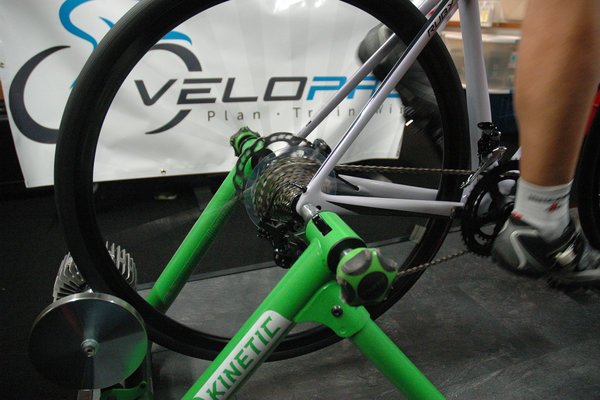
Most of us love to ride outdoors. There’s nothing better than speeding through the countryside feeling the wind on your face, tackling a challenging hill and carving through the descent that follows. A smart trainer and a box fan just can’t compete with nature. However, there are times when riding and training indoors is the best solution. Riding indoors gives you the ultimate control of your environment and safety. Here are the top reasons to ride indoors:
No matter your reason for training indoors, it is super easy to convert any VeloPro workout into an indoor Zwift or smart trainer session. With just a click, you can download your workout in .ZWI or .ERG file format. So, when you can't get out there, you can still get inside and ride!
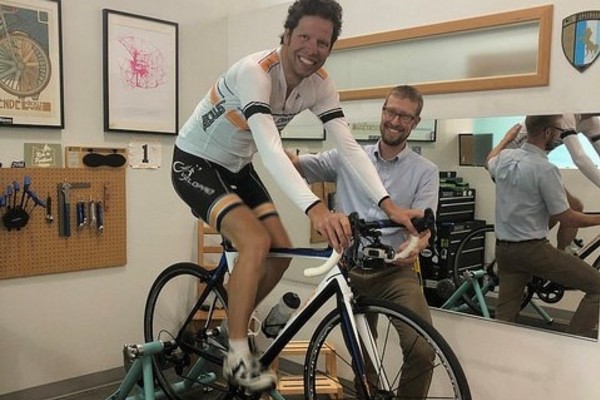
Poor bike fit is a big barrier to efficiency and a major cause of repetitive stress injuries. A great bike fit is a perfect meld of rider and machine. When your bike is optimized for your body mechanics, you feel comfortable in the saddle. You have more power and can ride longer. Most importantly, you have less knee, hip, back and shoulder pain. If you ride or train more than once a week you should seriously consider investing in a fit. Experienced riders know that millimeters can make a world of difference in comfort and performance.
Bike fitting is a combination of science and hard earned experience. A bike fit can cost anywhere from $150 to $400. Many bike shops offer fit services and there are several bike fitting "systems" that have passionate advocates. However, the best way to find a bike fit expert in your area is ask for recommendations from other riders. The top names will rise to the top. The only way to ensure that bike fit changes actually help is to ride. Look for an expert that will guarantee their work and make free adjustments for a few months after the initial fitting. If you have multiple bikes, you can ask your fitter replicate your setup from your primary bike to your other rides for an additional cost. Also remember, our bodies change over time, so if it's been a few years since your setup or if you get a new bike, revisit that fit.
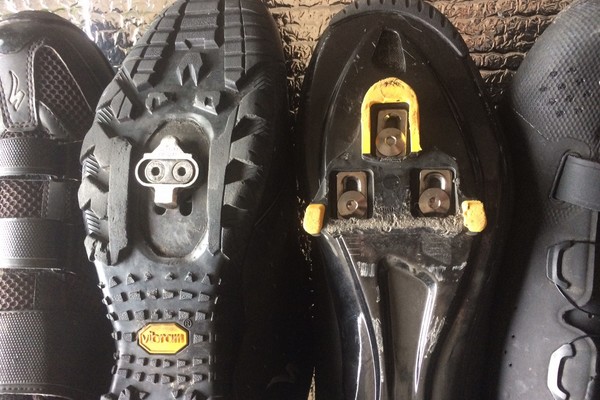
They're under your shoes and easy to forget, but breaking a cleat mid-ride can be a painful reminder! Loose cleats can completely change your float and pedaling dynamics, causing knee or ankle pain and loss of power. A cleat that sticks while unclipping can cause an embarrassing zero speed fall. No matter what cleat you use, SPD, SPD-SL, Speedplay, Look, or TIME, you should check them at least once a week. If you notice a tension change when clipping or unclipping this could be caused by a worn cleat or by one that is coming loose from the shoe. Make sure the bolts are tight. Look for cracks and breaks. Always replace worn cleats as soon as soon as possible. It is a good practice to keep a new set of replacement cleats on hand, so you are always ready to ride.
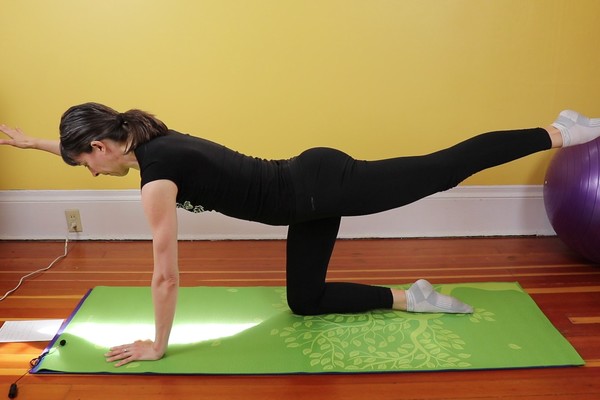
Don't. Stretching cold is a recipe for a pulled muscle. Each training workout should include a "Warm Up" interval of 10-15 minutes that slowly wakes up your muscles for the demand of more strenuous riding. Don't skip the warm up! Always stretch after you ride. Everyone has different body mechanics and therefore, different stretching needs. Common stretches for cyclists focus on quads, hip flexors, hamstrings, calves, the back, and shoulders. Make sure to gently hold each stretch for at least 40-60 seconds for maximum benefit. No bouncing! Consult an expert for proper technique. Click here for a video from our friends at GCN on 5 good cycling stretches. If you experience frequent muscle strain or pain in your knees, hips, back or shoulders that a good bike fit does not resolve, consult with a physical therapist. A physical therapist can create a custom stretching program to addresses your problem areas and greatly improve your comfort and flexibility on the bike.
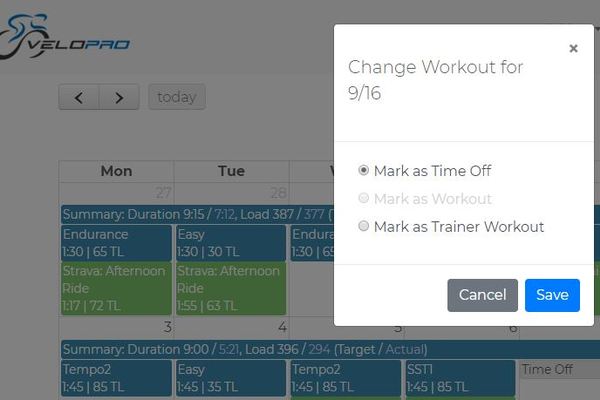
Life happens. Travel, schedule changes, illness, weather, kid’s soccer game, work deadline, family emergency—there are a million reasons why you may need to take a day or two off from training. In VeloPro, it is quick and easy to cancel a workout.
It is important to mark your days off on or before the actual date of the workout. This allows VeloPro to recalculate your training plan and individual workouts, so that you stay on track for your goal. If you change your mind later or your schedule frees up, you can always add cancelled workouts back to your plan by following the same process.
Please note that you cannot retroactively take days off or add a workout back to the calendar after the day has passed.
If you miss a workout or do not upload a ride for that day, VeloPro does not assume you took the day off and adjust your plan. This is because many athletes upload rides several days after they workout due to travel, network connectivity or convenience. When you upload multiple rides at one time, VeloPro takes into account your actual training load versus planned training load and may adjust future workouts to ensure you reach your goal in optimal shape.
At VeloPro, we know you have a busy life and want you to succeed! That's why we've built our training system to dynamically adapt to you.

Numb hands are a very common cycling problem. The more aerodynamic your position on the bike, the more weight you transfer forward from your saddle to your hands on the handlebars. Fresh bar tape and good cycling gloves can help reduce fatigue. Avoid doing the "white-knuckle death-grip" on your bars. Keep your shoulders and hands as relaxed as possible. Wiggle your fingers occasionally to rest your hands. Regularly adjust your hand position from the tops, to the hoods, to the drops. Your brake levers and shifters should be easy to reach from the hoods and the drops. You may need to adjust your bars for proper bike fit. Bars that are slammed too low or too far forward may look cool, but could be the issue. If you find your elbows are locked and arms straight instead of extended in a friendly handshake position, your bars likely need adjustment.
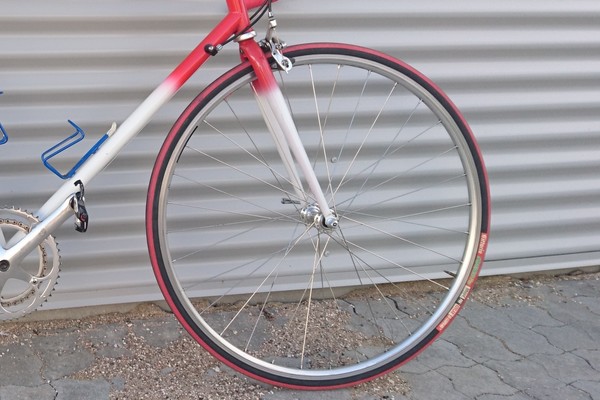
A common mistake is to run one's tires in an over-inflated state. The idea being that the "harder" a tire is, the less rolling resistance it has. In fact, that is not the case. The goal is to avoid pinch flats while reducing road buzz. Most people don't know that pinch flats occur not only when tires are under-inflated, but also when they are over-inflated. What do you do? Inflate your tires to the lower or middle PSI range recommended on the side of your tire. Just to the point where they can absorb small imperfections in the road surface, but no more. This is faster, more efficient and more comfortable. If you are a Clydesdale or Athena rider (over 200 lbs), you may need add an additional 10 PSI.

When you are cycling or training there's nothing worse than sweat rolling into your eyes. It is painful and worse it can be dangerous. Losing vision when drafting or on a 40 mph descent is a recipe for a crash. So, what can you do? The truth is that there is no common solution that works for everyone. You may have to try several things before you find the solution that works for you. Here are a few quick ideas to experiment with.
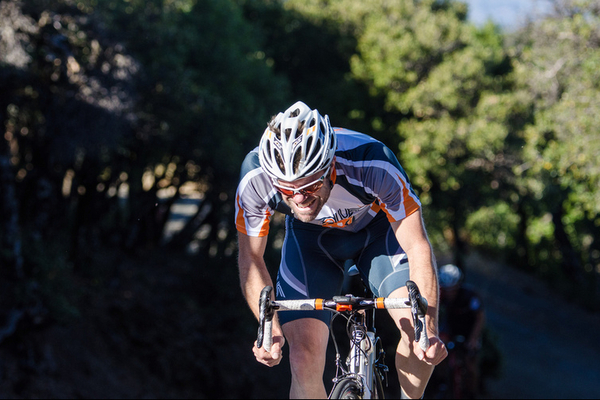
Interval training is as an important part of many training plans. Because of the intense demand they place on your body, intervals done correctly can help you make big performance gains. They can also greatly increase your risk of injury. It is important to understand what kind of intervals you are doing. Most endurance training plans call for LT (lactate threshold) intervals. Racing plans may call for the more intense VO2MAX intervals. LT intervals are designed to put steel in your legs to prepare you for tougher parts of a ride like hill climbs. VO2MAX intervals are designed to increase your heart rate to supply the maximum amount of oxygen possible to your muscles for huge bursts of power. Both types of intervals can be stressful on your body and bike.
If your plan calls for intervals, make sure you are prepared. Intervals are guaranteed to exacerbate any issues you may have. Do not do intervals if you have a nagging injury. Do not do intervals if you have any outstanding bike maintenance issues. Avoid doing intervals in excessive heat. Do not do intervals if do not have a safe place to do them. Doing intervals on a multi-use bike path with kids, dogs, and slow riders is a recipe for disaster. Also, do not do intervals on busy city streets. Interval training should not be an impromptu alleycat race where you risk your life. For increased safety and control, consider doing intervals inside on a trainer. Be very wary of doing intervals more than once a week. Your body needs sufficient time to recover from these extreme efforts.
One final word; do not get carried away and forget your technique. Focus on the maximum effort you can maintain with proper technique. This will help you reduce chances of injury.
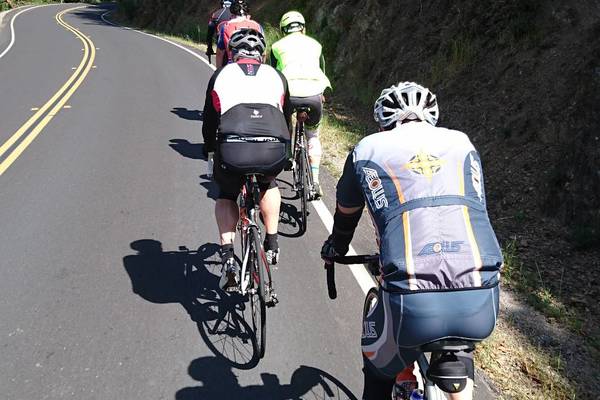
This sounds simple, but don't be a road zombie! Remember to look ahead. On group rides it is easy to settle into a rhythm and get fixated on the wheel of the rider just in front of you. Remind yourself to frequently look up the road and take cues from what's happening there. Movements at the front are often magnified down the line. If you are not paying attention, you can miss hand signals that point out pavement issues and road furniture. You can also miss abrupt changes in speed that can send you crashing into the riders in front of you.
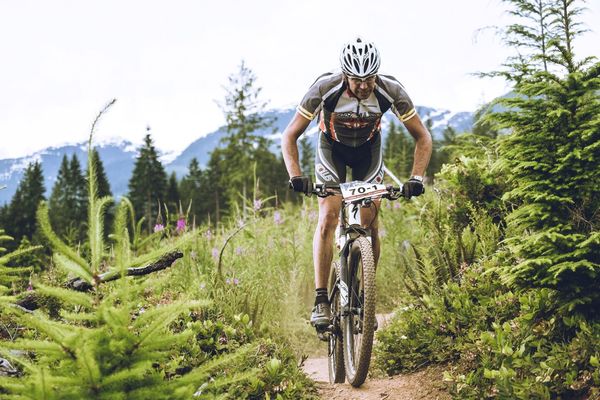
Downshift before you stand. If you are in too big of a gear, you can blow out your legs or injure your knees. Depending on your brake/shifter placement, shifting while standing can be difficult. When rising out of your saddle on a road bike, place your hands on the horns for stability. Keep your weight forward and use the time out of the saddle to stretch your legs. Keep a moderate cadence. This is not a sprint. If it is a long hill, limit your time standing. You can spike your heart rate. If the grade of the hill is very steep, you can pull against the bars and use your upper body for extra leverage.

Chain replacement is an important part of keeping your bike running smoothly and shifting well. You can lose precious watts with an inefficient drive chain. You’ve earned those watts, don’t give them away for free. When a chain is worn, it will measure longer than 12 and 1/16 inches (30.6cm) between pins along the bottom. You can measure this with a ruler or invest a few dollars in a simple chain checker tool like the Park Tools version in the picture. We love you Park Tools! You should check your chain for wear at least every 500 miles. Chain wear can vary based on your weight, riding conditions, and maintenance habits. If your chain slips under power or when shifting, this can be another sign. Give your chain a check today!
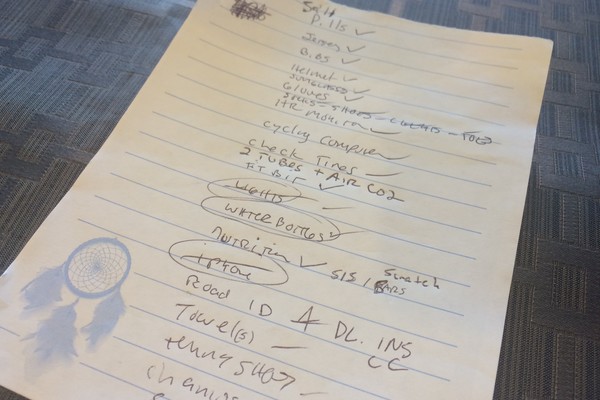
It sucks to show up after training for three months to your event only to find that you left your cycling shoes at home. It's downright embarrassing to forget your event credentials. It's more humiliating to forget your helmet and not be allowed to ride at all. Avoid the hassle by putting together a checklist of everything you'll need on the day. Don't forget the chamois cream, it's totally gross to borrow someone else's DZnuts.